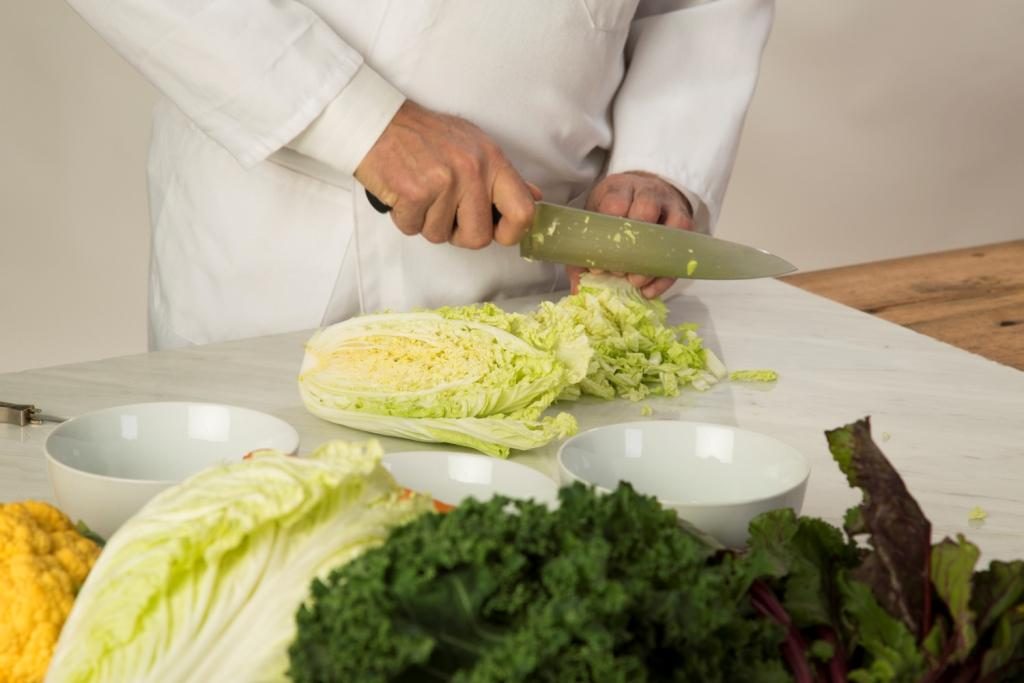What is Kimchi: Fermented Goodness in a Jar
Beginning in the age of Three Kingdoms (37 BC - 7 AD), farmers in Korea learned that salt could be used to preserve their harvests over the cold winter months. Originally made from the local radish crop and then eventually Chinese Napa cabbage, this fermented dish also includes punchy spice notes for a multidimensional kick. So let's dive in – what is kimchi in this day and age?
A Cultural Staple
Explore the world and you’ll notice that nearly every region has a fermented product that’s woven tightly into their cultural identity. Eastern Europe has sauerkraut; the Slavs have kvass; you’ll find soy and fish sauce thriving in Asia; Latin America has curtido and tepache; and here in North America we enjoy many of these plus the ever-trendy kombucha that came to us via Russia. North and South Korea are no different in terms of fermented food and cultural relevance - kimchi is actually considered their national dish!
At its start, kimchi was simply sliced radishes and salt. As experiments to cultivate new produce began, the condiment grew to include garlic and ginger, too. By the 17th century, Chinese cabbage made its way onto the scene so Koreans began to make the dish using this hearty veggie.
In the late 18th century, the Sino-Japanese War led to new spices flowing into the region - namely, red chili pepper. Salt was pricey at the time so the recipe adapted to include the spicy component. The Koreans found that in addition to its intense flavor and beautiful color, adding chili pepper stretched out the fermentation process. The exact component in red chili that leads this beneficial chemical reaction remains a mystery, but the method is tried and true!
By the early 20th century, kimchi had settled into the version best known today - Chinese Cabbage with salt and red chili pepper.

An Evolutionary Condiment
Kimchi is a multifaceted dish whose ingredient makeup varies depending on the season and region of its creation. In North Korea, where winters are cold and long, you’ll find versions that have lower salt and spice levels since the cold climates naturally slow down the fermentation process.
In the Southern region, which is surrounded on three sides by the ocean, their recipe is likely to have fish that thrive in temperate climates such as anchovies and shrimp. Kimchi from South Korea is more pungent in taste than their northern counterparts since large amounts of chili pepper and salt have to be added to slow fermentation down in the warmer climates. We talked about the effect of red chilis on fermentation, but here’s a tidbit on the importance of salt: Generally, salting reduces the moisture content, relative volume, and weight, as well as the internal void-space of cabbage. As a result of this brining, lactobacillus increases by 3-4 times thus helping to preserve the kimchi over time. If you want to learn more about the hard science behind salt and kimchi fermentation, click here.
In addition to regional differences, kimchi is made with different ingredients based on the season. The summer ferment tends to be lighter and can include cucumber, chives, and radish stems. Kimchi made in the winter is made with daikon radish, while the spring version is likely to include mustard leaves, parsley, and fresh Napa cabbage. In the fall, you are likely to eat the traditional method made from Napa cabbage following the harvest season.
A Healthy Powerhouse
According to Mercola, the health benefits of kimchi abound. Besides its beneficial effect on weight, cholesterol, blood pressure, and blood sugar, they report that consuming this condiment increases antioxidants, protects against asthma, fights constipation, improves colon health, brain health, and is even known to have anti-aging properties.
What is Kimchi to wildbrine?
We revel in tradition, culture, and always respect the origins of a fermented dish before putting our own spin on it. wildbrine Korean Style Kimchi is rich in gut-healthy probiotics and delicious flavor, and it is fermented with sea salt and gochugaru peppers just like the original. Where we forge a new path is that we lower the quantity of salt and don’t include any fish in the recipe. Thus, our kimchis are vegan- and vegetarian-friendly.
Then, we took inspiration from the Korean tradition of making kimchi with a variety of ingredients and this led us to our Japanese kimchi which has umami notes of horseradish, and tamari with daikon and carrots too. So, what is kimchi to us? A delicious fermented culinary exploration that features traditional elements with an innovative twist.